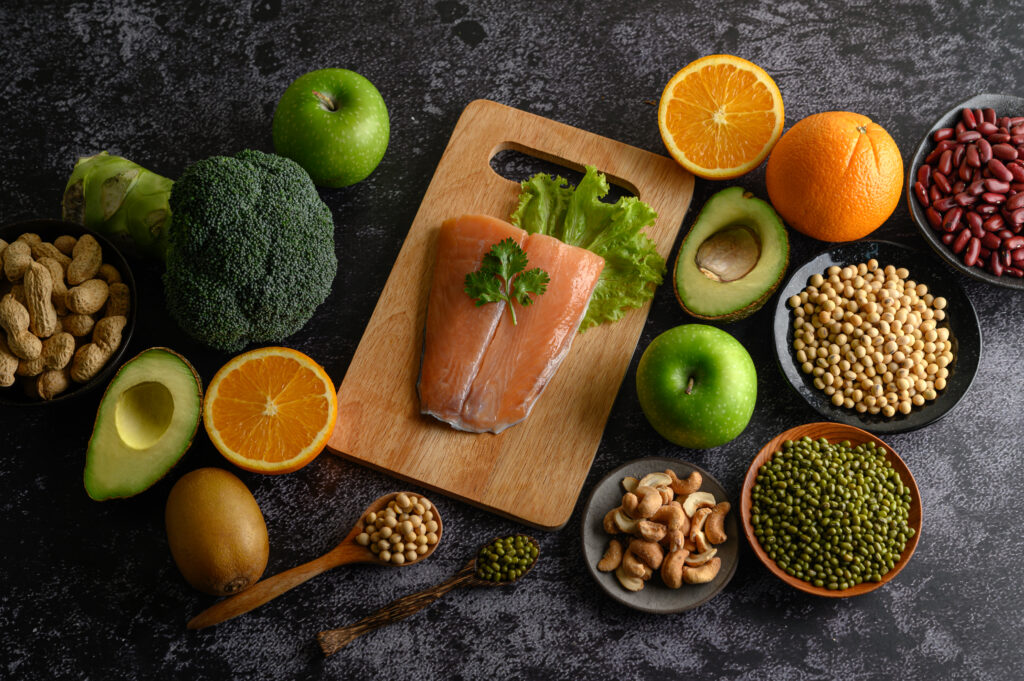
If you’re taking a GLP-1 hormone medication like Ozempic, Wegovy, Victoza, or Mounjaro (or a compounded version), you already know its positive effects. Decreasing your appetite, calming cravings, reducing “food noise,” and helping you feel full. Simply put, the medication makes it easier to lose weight because you’re not hungry very often. (Learn more here about how to eat well on GLP-1s.) Unfortunately, these medications are not without side effects, such as nausea and stomach discomfort. So is there an alternative—is it possible that eating certain foods can deliver similar benefits without the downsides?
What Does GLP-1 Do?
GLP-1 is an acronym that stands for Glucagon-Like Peptide-1. We all have the GLP-1 hormone in our bodies. It’s primarily produced in the intestines, pancreas, and hypothalamus area of the brain. And taking a GLP-1 medication increases the amount of the hormone in your body.
GLP-1 levels naturally rise and fall in response to eating. When food enters the gastrointestinal system, GLP-1 releases as part of the body’s mechanism to help us moderate food intake. It’s a signal to tell us to slow down now that food has arrived on the scene. GLP-1’s combined effects help promote satiety, and include:
- Slowing gastric emptying
- Decreasing food cravings and desire for alcohol
- Improving blood sugar control, especially for people with type-2 diabetes
- Reducing appetite
What Foods Help Increase the GLP-1 Hormone?
Studies suggest that certain types of foods can stimulate the release of GLP-1 and other appetite-regulating hormones. They are proven to help promote fullness and even potentially help with weight loss. And the use of food to support GLP-1 minimizes the potential adverse side effects that typically come with GLP-1 medications.
High-Fiber Foods
Many GLP-1-secreting cells are located toward the end of the intestines. Foods with ample fiber reach the lower intestine more readily than other foods because they don’t digest as quickly. Soluble fiber directly stimulates release of the GLP-1 hormone. And insoluble fiber can also help by supporting satiety and contributing to a healthy gut environment. All plant foods contain fiber—in general, the more fruits and veggies you eat, the better for your health overall. Good sources of soluble fiber include oats, beans, peas, barley, bananas, ground flax, nuts, and chia seeds.
Protein Foods
When we eat foods with protein, the digestion process breaks the proteins down into units called peptides and amino acids. Some peptides and amino acids trigger the release of GLP-1 in the intestines. Proteins take a while to digest, and therefore reach those GLP-1-secreting cells that are further along in the intestinal tract. Research also suggests that certain peptides help extend the biological activity of GLP-1, essentially keeping it around longer. Protein is already considered the most satiating of all the macronutrients and is often linked with weight loss. It also increases other satiety hormones in the body, so it’s a wise choice when you’re pursuing weight management.
Both animal protein and plant-based protein sources can impact GLP-1. Our advice: choose lean proteins such as eggs and egg whites, which show potential for positive effects in some studies. Low-fat dairy products are good options as well—they deliver protein, and their calcium can enhance GLP-1 too. And protein shakes, fish, and seafood are always good choices for lean protein. Among plant-based proteins, soy protein shows GLP-1-enhancing effects and there are many ways to incorporate soy protein into meals. Other plant-based protein-containing foods like nuts, pulses, beans, and certain grains are also a-ok, and have the advantage of providing fiber as well as protein. Overall though, it’s more about getting protein throughout the day—and less about exactly which foods provide it.
Foods Rich in Monounsaturated Fats
Numerous studies indicate that monounsaturated fatty acids trigger GLP-1 release. Many of these studies tested with olive oil, but other oils are also good sources of this healthy fat. Avocado oil, safflower oil, canola oil, peanut oil, and sesame oil, to name a few. Plus, there are foods that contain monounsaturated fats. Almonds, hazelnuts, pecans, pumpkin seeds, and sesame seeds (as well as nut and seed butters made from them), and avocados. Whenever possible, use monounsaturated oils instead of less-healthy saturated fats to help boost GLP-1 levels and keep your heart happy.